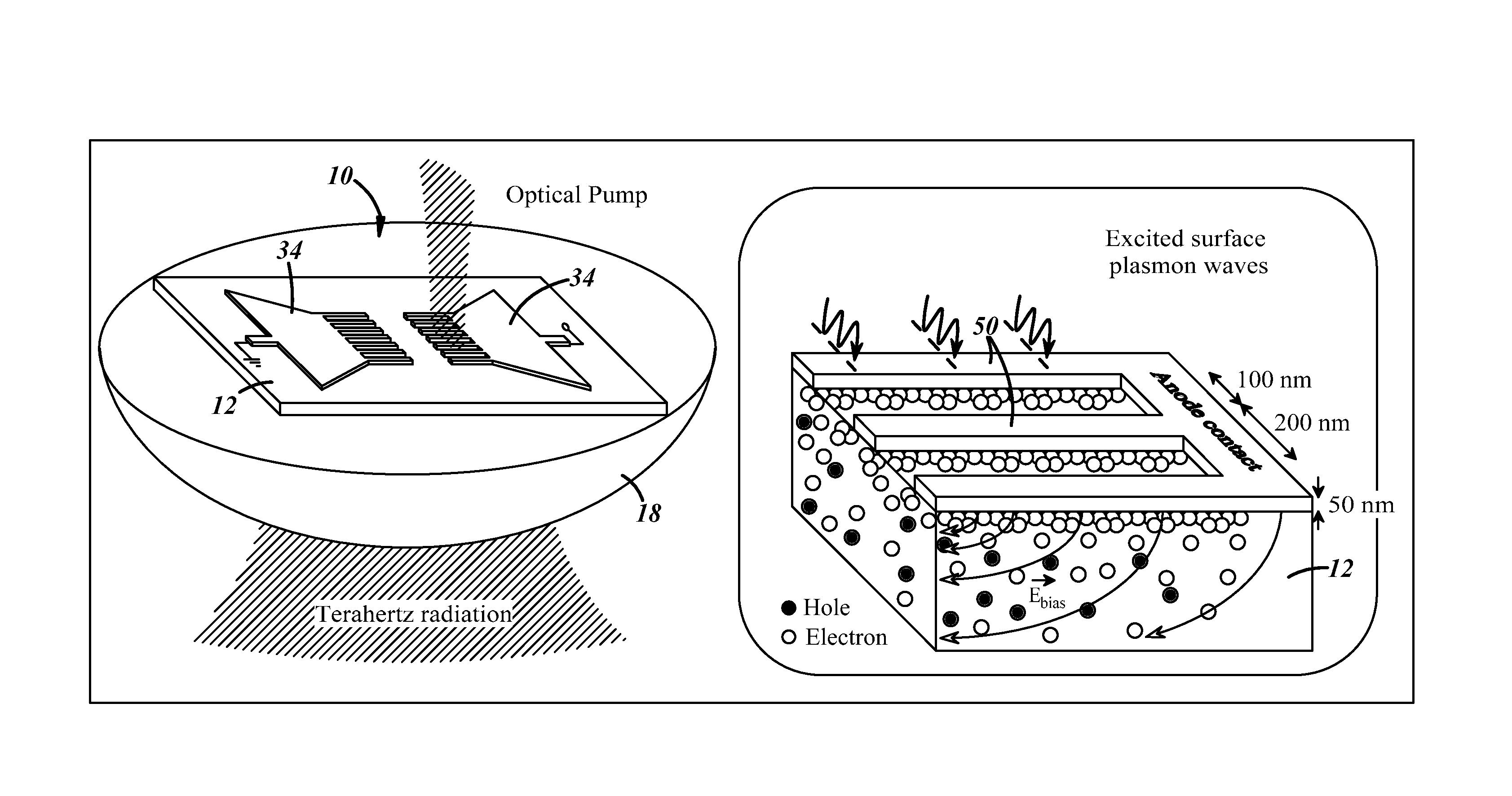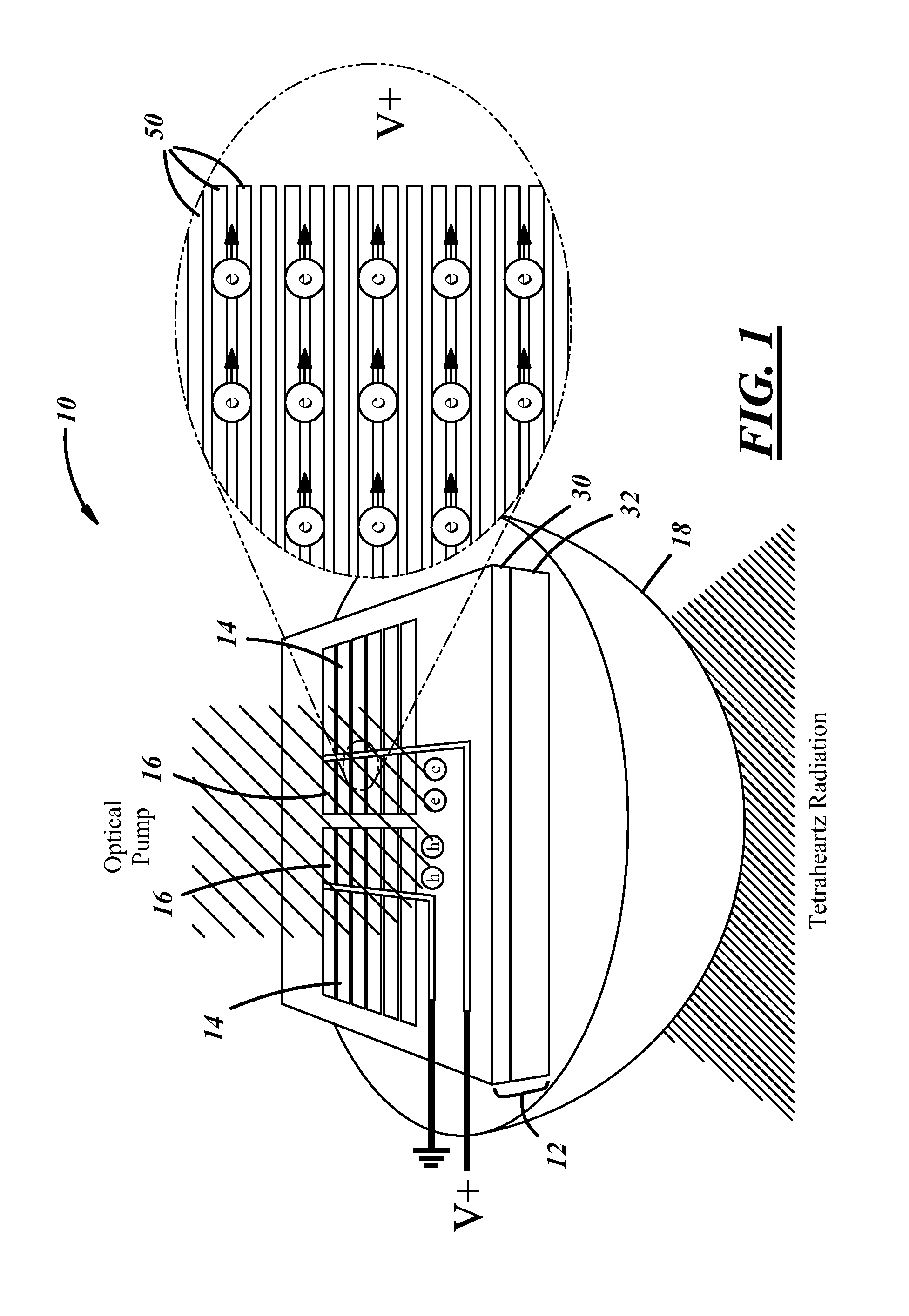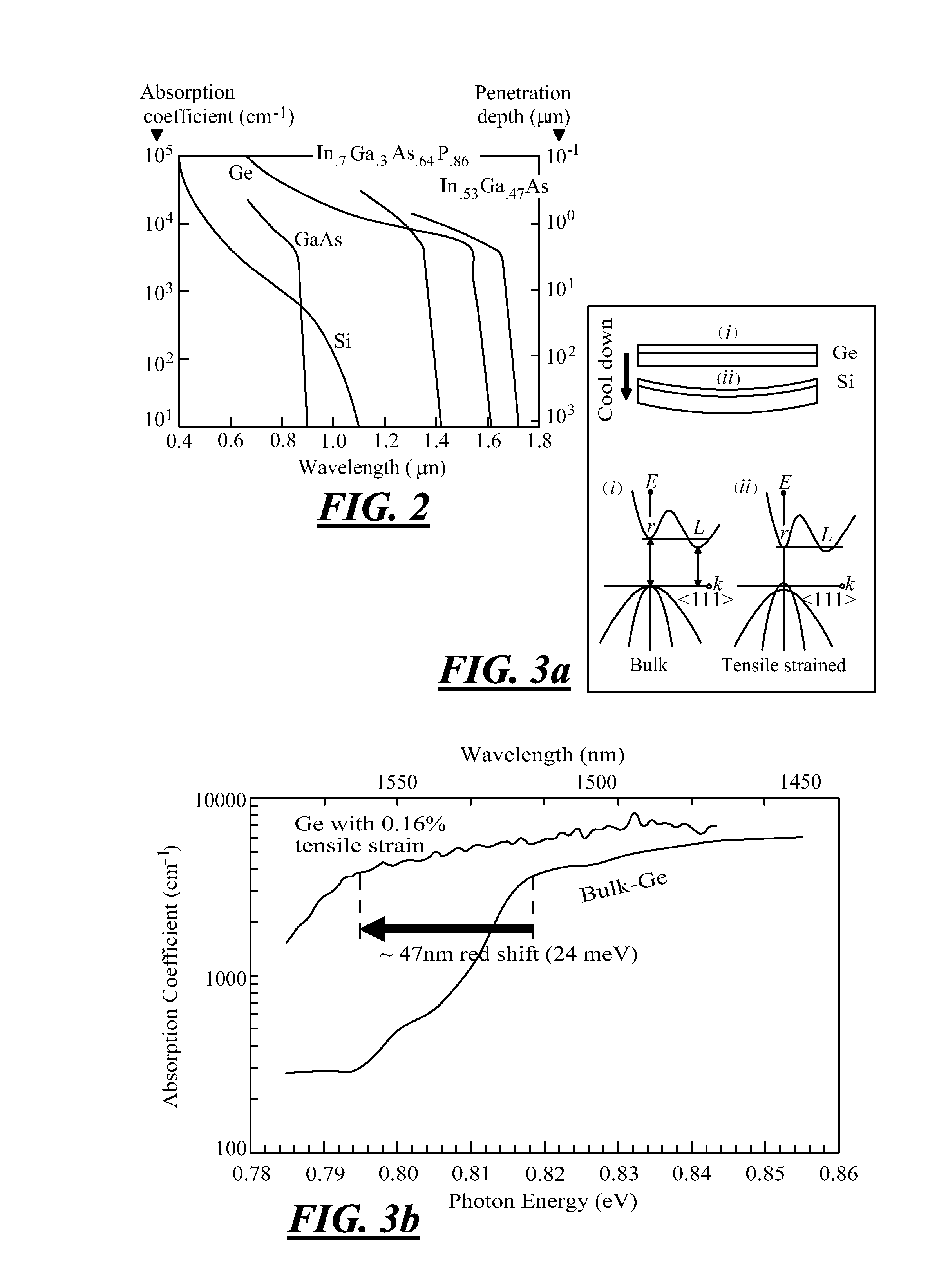Photoconductive device with plasmonic electrodes
a plasmonic electrode and photoconductive technology, applied in the field of photoconductive devices, can solve the problems of low power, inefficiency, thermal breakdown, high cost, etc., and achieve the effect of improving the quantum efficiency of the photoconductive devi
- Summary
- Abstract
- Description
- Claims
- Application Information
AI Technical Summary
Benefits of technology
Problems solved by technology
Method used
Image
Examples
Embodiment Construction
[0019]The photoconductive devices described herein address some of the performance limitations of existing photoconductive devices. According to an exemplary embodiment, the photoconductive device may be a high-performance plasmonic-distributed photoconductive terahertz source that is pumped at telecom pump wavelengths (e.g., 1.0-1.6 μm) for which high power, narrow linewidth, frequency tunable, compact and cost-efficient optical sources are available. A photoconductor assembly having a number of distributed plasmonic contact electrodes may significantly enhance the pump coupling efficiency, while enabling ultra high-speed collection of photo-generated carriers and mitigating the carrier screening effect and thermal breakdown limitations that can occur while operating at high pump power levels. This, in turn, may enable terahertz power levels that are significantly higher than those currently available. According to one exemplary implementation, the photoconductive device is a frequ...
PUM
 Login to View More
Login to View More Abstract
Description
Claims
Application Information
 Login to View More
Login to View More - R&D
- Intellectual Property
- Life Sciences
- Materials
- Tech Scout
- Unparalleled Data Quality
- Higher Quality Content
- 60% Fewer Hallucinations
Browse by: Latest US Patents, China's latest patents, Technical Efficacy Thesaurus, Application Domain, Technology Topic, Popular Technical Reports.
© 2025 PatSnap. All rights reserved.Legal|Privacy policy|Modern Slavery Act Transparency Statement|Sitemap|About US| Contact US: help@patsnap.com



